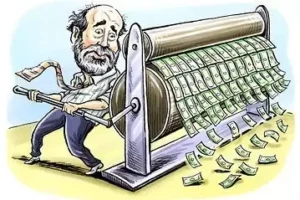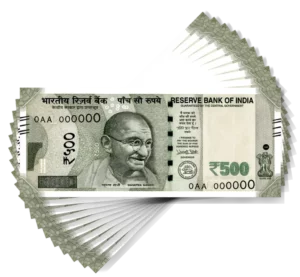
In a world where paper currency is the norm, India stands out with a unique approach to its monetary system. Contrary to popular belief, Indian currency is not made of paper. In this guide, we’ll delve into the fascinating journey of Indian currency, exploring its composition, history, and the intricate processes involved in its creation.
The Evolution of Indian Currency:
To understand the present, it’s essential to explore the past. India’s monetary system has a rich history dating back centuries. Traditionally, coins made of various metals were the primary mode of currency. However, the transition to paper currency was a significant turning point.
The Birth of Indian Paper Currency:
Contrary to the misconception that Indian currency is paper-based, it is, in fact, composed of a cotton and rag blend. The decision to shift from metal coins to paper notes was driven by practicality and convenience. The Reserve Bank of India (RBI), established in 1935, played a pivotal role in this transformation.
The Composition of Indian Currency:
The material used in Indian currency notes is a mix of cotton and high-quality rag. This composition not only gives the currency its distinctive texture but also enhances its durability. The blend of cotton and rag ensures that the currency withstands the wear and tear associated with everyday use, making it resilient compared to traditional paper.

The Printing Process:
The creation of Indian currency involves a meticulous printing process. The Security Printing and Minting Corporation of India Limited (SPMCIL) is responsible for producing these notes. The process incorporates advanced security features to prevent counterfeiting, ensuring the integrity of the currency.

Security Features:
Indian currency notes are equipped with a range of security features designed to thwart counterfeit attempts. From watermarks to security threads, these measures contribute to the robustness of the currency. Exploring these features provides insight into the level of sophistication involved in the production of Indian currency.
Denominations and Designs:
One of the intriguing aspects of Indian currency is the variety of denominations and the artistic designs adorning each note. Each denomination carries a unique set of features, celebrating the rich cultural diversity of the nation. From Mahatma Gandhi’s portrait to iconic landmarks, the designs encapsulate the essence of India.
The Role of RBI:
As the central banking institution, the Reserve Bank of India plays a crucial role in the issuance and management of currency. The RBI carefully monitors and regulates the supply of currency notes in circulation, ensuring a stable and secure monetary system.
Challenges and Innovations:
The journey of Indian currency hasn’t been without challenges. The constant threat of counterfeit currency has led to continuous innovation in security features. Technological advancements, including holograms and color-changing inks, are now integrated into the currency to stay ahead of counterfeiters.
The Future of Indian Currency:
Looking ahead, the landscape of currency is evolving globally. Digital currencies and cashless transactions are becoming increasingly prevalent. However, Indian currency, with its unique composition and rich history, continues to hold its ground. The RBI remains committed to adapting to the changing financial landscape while preserving the essence of traditional currency.

Conclusion:
In conclusion, the revelation that Indian currency is not made of paper adds a layer of complexity and uniqueness to its story. The blend of cotton and rag, the intricate printing process, and the incorporation of advanced security features make Indian currency a fascinating subject. As we navigate the evolving landscape of finance, the resilience and adaptability of Indian currency stand as a testament to the nation’s commitment to its monetary heritage.
